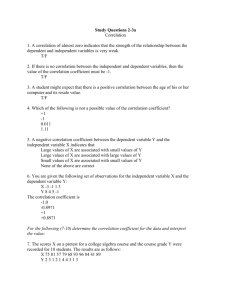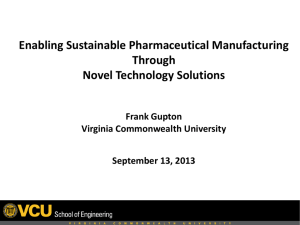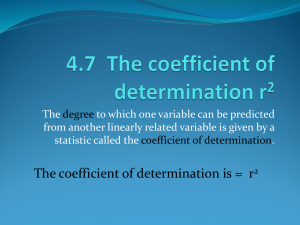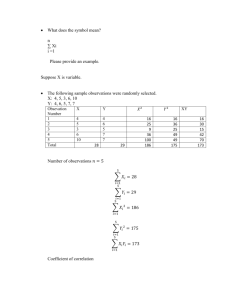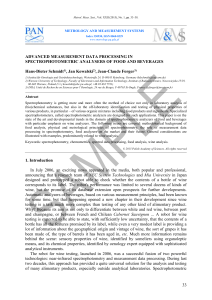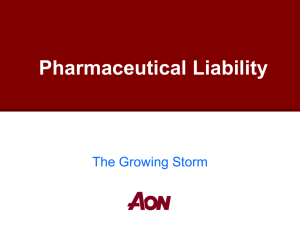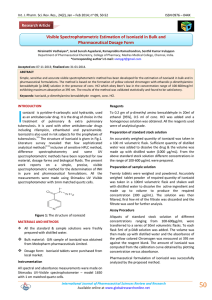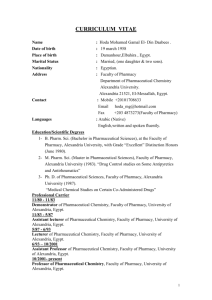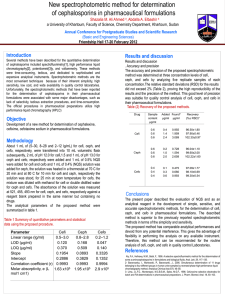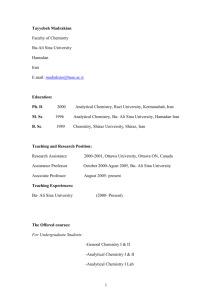Chapter one
advertisement
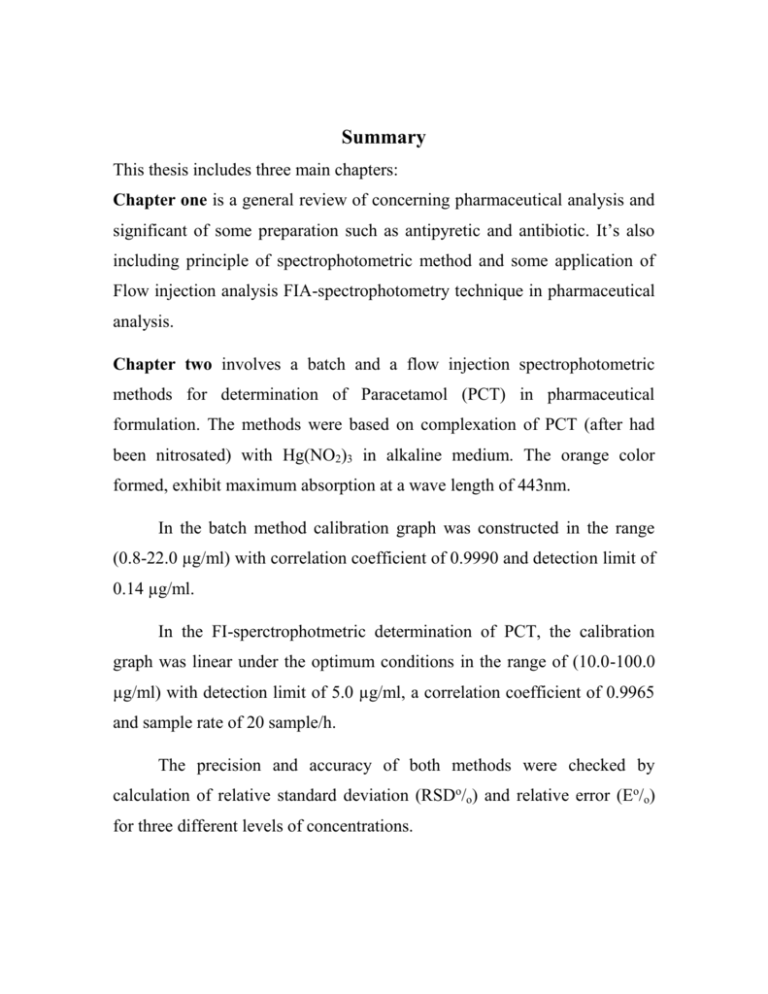
Summary This thesis includes three main chapters: Chapter one is a general review of concerning pharmaceutical analysis and significant of some preparation such as antipyretic and antibiotic. It’s also including principle of spectrophotometric method and some application of Flow injection analysis FIA-spectrophotometry technique in pharmaceutical analysis. Chapter two involves a batch and a flow injection spectrophotometric methods for determination of Paracetamol (PCT) in pharmaceutical formulation. The methods were based on complexation of PCT (after had been nitrosated) with Hg(NO2)3 in alkaline medium. The orange color formed, exhibit maximum absorption at a wave length of 443nm. In the batch method calibration graph was constructed in the range (0.8-22.0 µg/ml) with correlation coefficient of 0.9990 and detection limit of 0.14 µg/ml. In the FI-sperctrophotmetric determination of PCT, the calibration graph was linear under the optimum conditions in the range of (10.0-100.0 µg/ml) with detection limit of 5.0 µg/ml, a correlation coefficient of 0.9965 and sample rate of 20 sample/h. The precision and accuracy of both methods were checked by calculation of relative standard deviation (RSDo/o) and relative error (Eo/o) for three different levels of concentrations. Chapter three includes a batch and a FI spectrophotometric methods for the determination of MET in pharmaceutical formulations. Essential parameters such as accuracy and precision were studied for two methods by calculation of (RSDo/o) and (Eo/o) respectively. The batch method involves a simple and sensitive spectrophotometric procedure, in which NO2 group of MET reduced by HCl and Zn dust to give NH2 group, which is diazotized and coupled with α-Resorcylic acid in alkaline medium to produce orange color azo dye colored compound having λmax of 485nm. Beer’s law was obeyed over a concentration range (0.4-25.0 µg/ml) of MET with correlation coefficient of 0.9991 and detection limit of 0.14 µg/ml. FI- spectrophotometric method based on the diazotization of RMET and followed by coupling with α-Resorcylic acid in alkaline medium. Linear relation was obtained between absorbance and RMET concentration in the range of (5.0-60.0 µg/ml) with good correlation coefficient of 0.9977 and detection limit of 0.36 µg/ml and sample rate of 75 sample/h.

